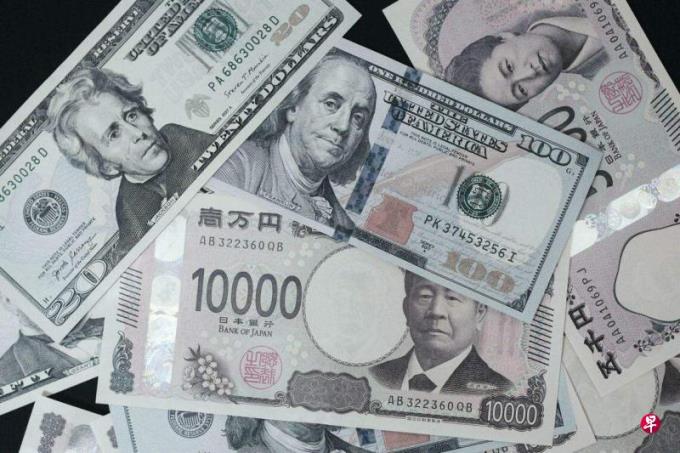
Powell, Chairman of the United States Federal Reserve, attended the semi -annual monetary policy report hearing on July 10th, saying that recent data shows that the U.S. inflation has signs of good inflation. More good data will enhance the central bank to return to the 2%target of inflation to the 2%target.Confidence does not require specific inflation numbers to determine interest rate cuts.
The delay of the Federal Reserve has not cut interest rates, which has led to the expected expectations of the international market on the strong end of the US dollar.Powell's speech and data from the US Department of Labor are convinced that the Fed is about to open the interest rate reduction window.On the evening of the 11th, the yen rose from 161.76 to 157.43.This is almost the same as that of the Bank of Japan's use of 9.8 trillion yen (S $ 84 billion) to interfere with the foreign exchange market on April 29, almost the same.However, this time is the United States promoted, and the role is much greater than the Japanese government's "mouth cannon" and "real bombs".
The sharp depreciation of the yen seriously affects the domestic economy of Japan. The Ministry of Finance of Japan and the Bank of Japan waited for the opportunity to interfere with the foreign exchange market, increase the yen, and curb excessive depreciation, so as to reduce the risk of exchange rate factor to Japan's domestic economy.As a last resort.In March 2022, the Fed began to raise interest rates. International funds flowed to the United States, the US dollar appreciated sharply, and the yen depreciated sharply. The Ministry of Finance of Japan invested three times in September and October 2022 to the stable exchange rate of funds.
On April 29, 2024, the US dollar instantly rose to 160.22 yen, and the yen rose sharply, reaching 151.86 within four days.The market generally believes that Japanese officials have started.US Treasury Secretary Yellen expressed dissatisfaction and warned that Japan would discuss with the United States if he started.On May 31, one month later, the Ministry of Finance of Japan released the implementation of foreign exchange balance operations from April 26 to May 29.The published data show that in the past month, Japan has spent 9.8 trillion yen to support the yen exchange rate.The scale of this rescue not only exceeded the market expectations of 9.4 trillion yen, but also refreshed the monthly highest monthly record of 9.1 trillion yen set in 2011, and exceeded 2022 to interfere with the total amount of the foreign exchange market.It can be seen that Japan is very reluctant to see the yen to slide to the 160 -to -160 barrier.
Japan's use of such large -scale capital intervention in the foreign exchange market, one is to express the momentum of resolutely curbing the excessive depreciation of the yen, and the other is to reflect that the difficulty of the Japanese yen is increasing.After Japan rescued the market, the United States issued severe warnings on June 20.The semi -annual monetary report submitted by the US Treasury to the US Congress included Japan in the "Exchange Monitoring List".This is much more effective than the US Treasury Secretary Yellen's many oral warnings.After that, the yen reached a new low against the US dollar to a minimum of 161.95, offset the market operating effect of 9.8 trillion yen in Japan.
On June 27, the chief of the Japanese official house and the Minister of Finance both expressed their attention to the excessive depreciation of the yen, indicating that it was necessary to take action intervention in time.The Ministry of Finance of Japan announced on the 28th that Sancun Chun was the deputy minister of the Ministry of Finance, replaced the Kanada real person in charge of the international affairs of the Ministry of Finance, responsible for supervising Japan's foreign exchange policies and coordinating economic policies with other countries.Obviously, under the emergency of the yen's plunge, the replacement of the highest currency officials may have new policy considerations.
Japan has the strength to prevent the yen from devaluation.The International Capital Flow Report released by the US Treasury on June 18 shows that Japan is still the largest overseas creditors in US Treasury bonds. Although US debt positions have decreased by US $ 37.5 billion (about $ 5.3 billion), there are US $ 115 trillion.The Japanese government uses the way to sell US debt to prevent the excessive depreciation of the yen, which is a very effective means.According to data released on May 28, 2024, the Ministry of Finance of Japan shows that as of the end of 2023, Japan's foreign net assets reached 4.7131 trillion yen, ranking first in the world for 33 consecutive years.Japan's foreign net assets are the difference between the Japanese government, enterprises and individuals in overseas assets and liabilities.This has increased by 12.2%over the previous year, a record high for five consecutive years.This is Japan's confidence in the world's largest debt country and the United States.
Also, Japanese private financial institutions may also passively adopt action to reduce holdings of US debt.The Japanese Agriculture and Forestry Central Victory announced in June that in order to reduce the risk of holding low -income US and European bonds, it will sell 10 trillion yen of overseas bonds by March 2025.The high interest rate of interest rates in the United States and the Federal Reserve's late interest rate late is the fundamental reason why the agricultural and forestry central vaults that lead to a large number of overseas bonds fall into a crisis of a huge loss.As of the end of March this year, the bank held about 23 trillion yen of foreign bonds, accounting for 42%of the investment portfolio.The interest rate of the United States and Europe has continued to be high, and the valuation of bonds issued in the past has decreased significantly, which led to a sharp increase in bank's book loss.Japan's financial institutions in the foreign exchange market will take the actions of selling U.S. debt, which will have a huge impact on the US dollar.
Japan and China and many other countries are vigilant against the US dollar.As the largest and second largest overseas holding countries in the U.S. debt, Japan and China have always paid great attention to the movement of the Fed and the US dollar trend.The expected increase of interest rate cuts in the Fed and changes in the trend of the US dollar will have a huge impact on the international financial market and the world economy.
The author is a researcher at Anhui Academy of Social Sciences




